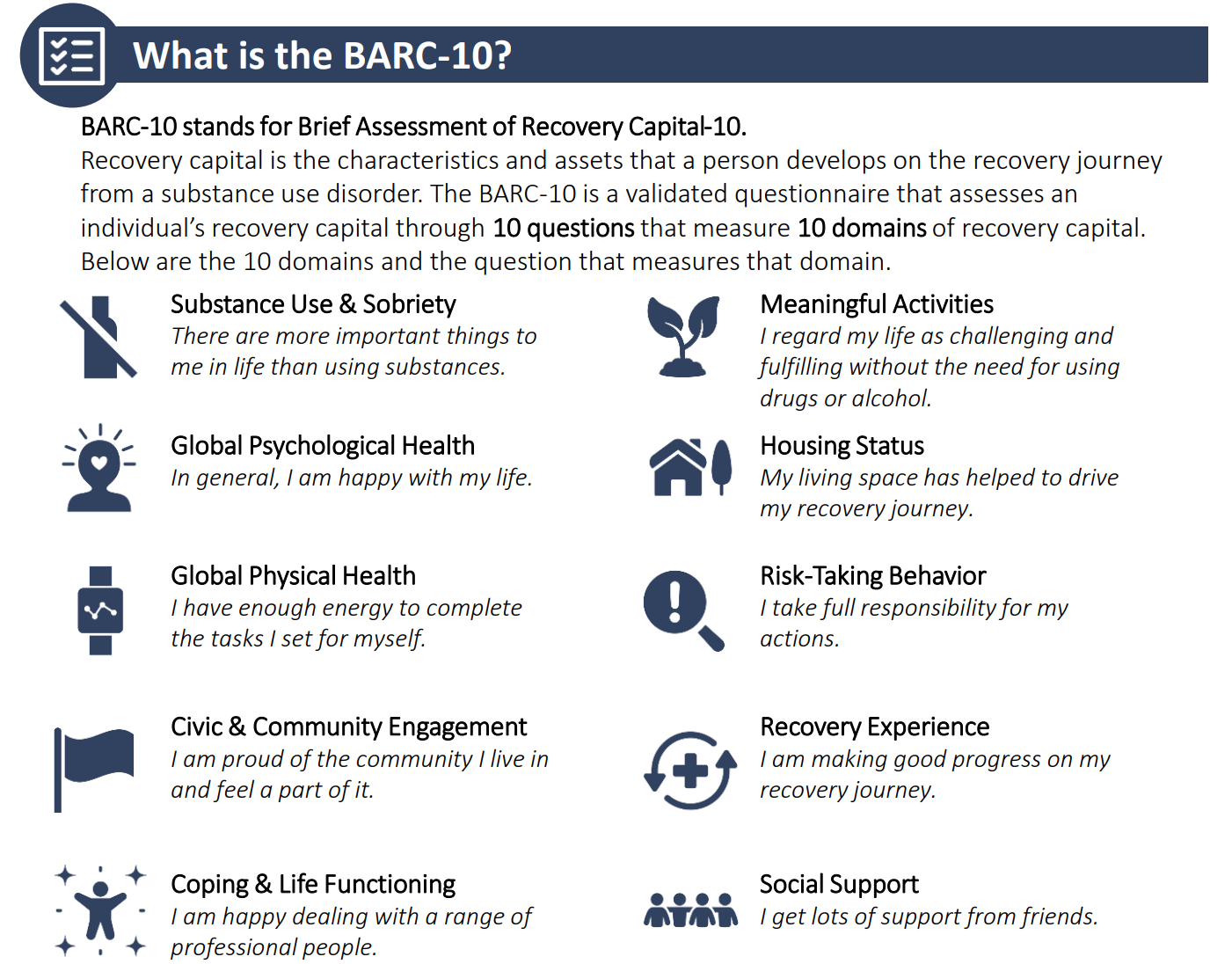
Why does Pennsyvlania Recovery Center use the BARC-10?
Addiction is a complex and multifaceted condition that affects individuals in different ways. In order to effectively treat and manage addiction, it is important to have a clear understanding of an individual's specific needs and challenges. One way to gain insight into the severity of the addiction is by using a standardized assessment tool, such as the BARC-10.
What is the BARC-10?
The BARC-10, or Brief Addiction Rating Scale, is a 10-item questionnaire designed to measure the severity of addiction across three domains: physical dependence, emotional dependence, and loss of control. Each item is rated on a 4-point scale, with higher scores indicating greater addiction severity. The BARC-10 has been found to be a reliable and valid measure of addiction severity, with good test-retest reliability, internal consistency, and construct validity.
What are the benefits of the BARC-10
One of the key benefits of the BARC-10 is its ability to provide a comprehensive assessment of addiction severity. The physical dependence domain assesses withdrawal symptoms and tolerance, while the emotional dependence domain assesses the individual's emotional attachment to the substance or behavior. The loss of control domain assesses the individual's ability to control their substance use or behavior. By assessing these different aspects of addiction, the BARC-10 can provide a more complete picture of an individual's needs and challenges.
Who should use the BARC-10?
The BARC-10 has been used in a variety of settings and populations, including inpatient, outpatient, and community samples. It has been found to have good sensitivity and specificity for detecting addiction severity, making it a useful tool for both clinical practice and research. The BARC-10 is a self-report measure, which may be affected by bias in self-report, but it is widely accepted as a good tool to assess the severity of addiction in patients.
Why is the BARC-10 needed?
In clinical practice, the BARC-10 can be used to guide treatment planning and monitor progress over time. For example, by administering the BARC-10 at the beginning of treatment, a clinician can identify areas of greatest need and target interventions accordingly. By administering the BARC-10 periodically throughout treatment, a clinician can track progress and make adjustments as needed.
In research, the BARC-10 can be used to investigate the effectiveness of different treatments and interventions for addiction. By comparing BARC-10 scores before and after treatment, researchers can determine the extent to which a particular intervention is effective in reducing addiction severity.
In conclusion, the BARC-10 is a valuable tool for assessing the severity of the addiction. By providing a comprehensive assessment of addiction severity across multiple domains, the BARC-10 can help guide treatment planning and monitor progress over time. It is widely accepted as a good tool in both clinical practice and research settings, and it can be a valuable tool in identifying the areas that need to be addressed in addiction treatment."
Pennsylvania Recovery Center is proud to use the Gold Standard in measuring patient treatment outcomes, and will posting yearly data starting in 2024.
Need some assistance for your addiction?
Reach out to us today!

